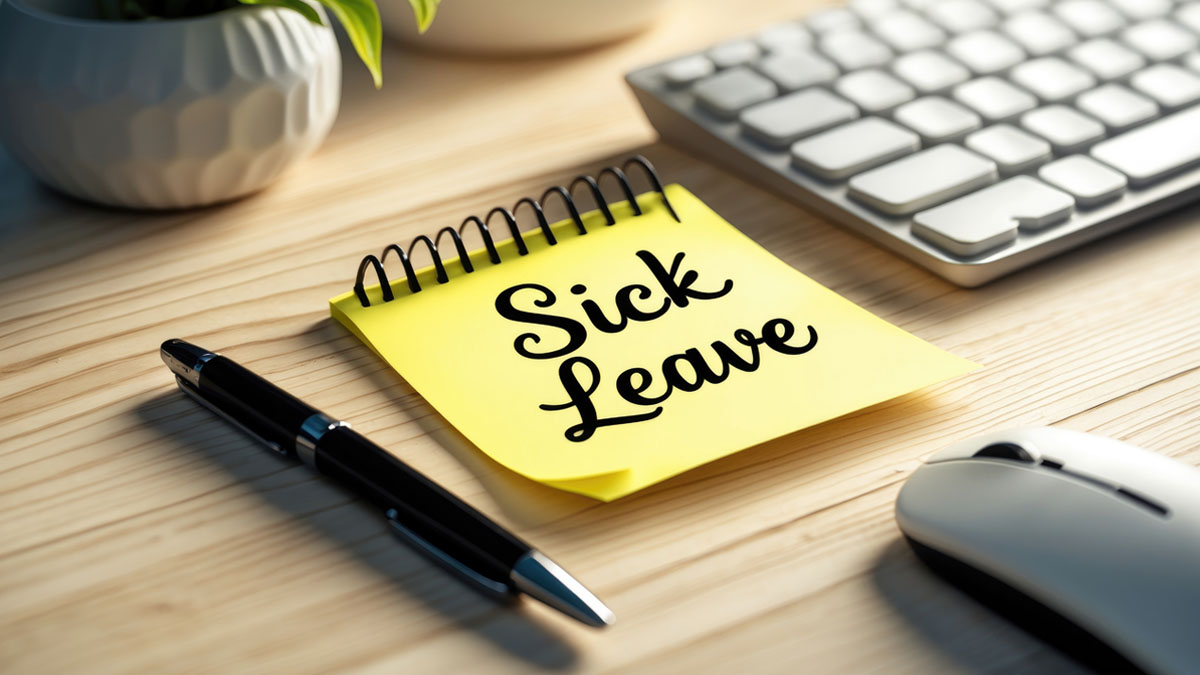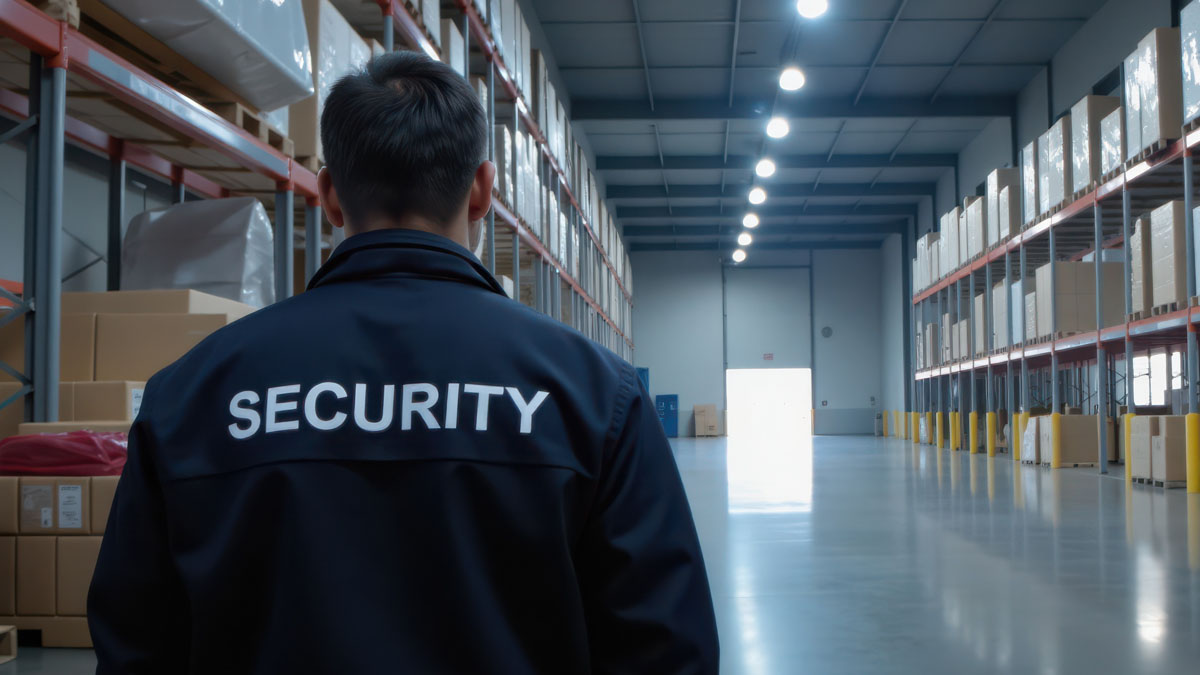

JUNE 2025
EDITION
BI-MONTHLY ORBIT
Two weeks sick leave a year

It seems that employees’ sick leave continues to grow and is now at the highest it has been in 15 years.
A report done by the Chartered Institute of Personnel & Development in partnership with Simply Health found that employees now average 9.5 days (nearly two working weeks) of sickness absence in the last year.
Pre-pandemic, it was just 5.8 days in 2019. So, this jump is a 62% rise, and the report indicated that the increase is due to the increasing rates of chronic conditions, long waiting lists in the NHS and an ageing workforce.
As has been the norm for some time now, mental ill health is the primary reason for long-term absence (4 weeks or more). Whereas short-term absence (less than 4 weeks) is for minor illnesses.
The longer the absence, the harder it is for employees to return, so employers with an initiative-taking wellbeing approach will be better placed to manage absences.
One of the factors that often goes unaddressed is presenteeism. That employees working when they are unwell. It is estimated that presenteeism accounts for 44 days lost productivity per worker each year. This is clearly an even bigger issue.
We all know that employees will ask to work from home as they are not well and or its clear to managers that someone is unwell in the workplace. It is surprising that many line managers are unaware that they have a duty of care for their direct reports and that they have the authority to insist an employee go home and be recorded as absent. If we know an employee is sick then they should not be allowed to work be it in the office or at home. To allow it means the employer is complicit in allowing them to work.
In HR we often see cases where the employees claims that an employer has made them sick and of course if the employer allows an employee who is sick to work then you are providing the employee with the evidence to prove that claim and lead to a far more costly outcome.
So, what can you practically do to support your employee’s wellbeing?
More than 88% of employers offer mental health support via an employee assistance Programme but many of those are reactive and used only when the problems are very severe. Identifying and recognising the early signs of distress is the key. Training your line managers to spot the early signs, how to have open conversations and how they can support and make adjustments will help before absence occurs.
Have line managers and in fact anyone interested in becoming a Mental Health First Aider in your business so that they feel comfortable in opening up a wellbeing conversation. Let us face it we are often scarred to in case we make things worse but the MHFA training gives you the confidence to know how to approach and respond.
It still amazes me that this is not a legality yet. After all Mental health is the biggest absence issue yet we are legally obliged to have a designated number of first aiders in the business yet most are not mental health first aiders. If this is your current situation, did you know you just have to ask your first aid training provider to add mental health to any new first aiders or to the refresh for existing.
If you need a trainer introduction do not hesitate to ask The HR Jedi.
Guest Writer
Our Guest Writer – Debbie Atkins, Debbie Atkins Fitness

Why we can’t afford to neglect wellness in our business!
Running a business or working full-time often leaves little room for self-care. Our days can be back-to-back meetings, travel, deadlines, and constant digital connectivity and this can make it easy to skip meals, rely on caffeine, make poor food choices, consume ultra processed foods and neglect exercise/movement.
The truth is your health is directly tied to your performance. Energy, focus, decision-making, and resilience are some of the qualities that make a successful in business and they all rely on how well you take care of your body and mind.
Why health matters in business
- Energy equals productivity
Long working hours without fully supporting your body can be a drain. Mix this with poor nutrition and lack of exercise and this can compound the problem. Eating nutrient-dense foods and staying active helps stabilize energy levels and help regulate blood sugar levels, thus reducing inflammatory responses within your body. For example, if you find you suffer from energy slumps during the day, your body is struggling to control itsl blood sugar levels. When this happens multiple times across a day, over time this could lead to pre-diabetes and then if that is not managed Type 2 Diabetes. - Sharper thinking
Research shows that regular exercise improves cognitive function, memory, and problem-solving. A brisk walk or workout can sharpen your thinking and help you approach problems with more creativity, clarity and ease. - Stress management
Stress in business is unavoidable, but unmanaged stress can lead to burnout, poor decision-making, and chronic health issues. Exercise/movement can reduce cortisol and boost endorphins. - Long-term sustainability
Building a business or progressing in an organisation is a marathon, not a sprint. Without maintaining your health, the likelihood of illness will increase and will impact the quality of your life.
A few tips for staying healthy with a full schedule
- Prioritise your food/meals
Plan ahead with your meals in the same the way you would plan your meetings. Having healthy alternatives to hand will help you to avoid reaching for sugary or processed options. Make sure you get enough quality protein, good fats and variety of colour with your vegetables – your gut microbiome loves variety! - Hydrate not caffeinate
Excessive caffeine can disrupt sleep and increase stress. Keep a water bottle nearby, ideally drink room temperature water as the fluid is more easily absorbed into the cells, where it needs to be to support the body’s hydration. - Incorporate movement
Take the stairs, walk during calls, or stretch between tasks. A few minutes of movement will add up across the day. Getting outside in the light and ideally amongst greenery even for a few minutes will help calm your body and brightness into your eyes in the morning will help with sleep later in the day. - Schedule exercise/movement like a meeting
Treat your workouts/movement as non-negotiable appointments, consistency is more important than intensity. - Protect your sleep
Sleep is when your body repairs, your mind processes information, and your energy is replenished. Aim for 7–8 hours of quality rest each night. - Set boundaries with technology
Being always online/available means the body is constantly on alert. Create device-free times to allow your mind to switch off and recover.
A thought to takeaway…….
The most successful leaders understand that health is not a luxury, it is an essential business asset.
Your health is your responsibility, and it is within your control.
It takes only a few minutes to complete, click on the link below and answer the online health check. You will find out how your body’s systems are performing and what areas may need more focus.
I offer a free 20-minute call to discuss your results and guide to what the next steps could be for you.
Debbie Atkins Fitness
07834 861827
debbie@debbieatkinsfitness.com
www.pro360nutrition.co.uk/ba/debbie and click on the tab that says “Click to access the FREE Health Check”
Remote & lone worker risks

Let us start with what these are: Remote worker is someone who works at various locations i.e. away from the office or business premises. They spend the majority of their work time travelling to different locations and customers.
Examples would be in the transport industry like lorry driver, taxi etc, service engineers, care workers, and sales representatives to name just a few.
A lone worker is someone who is the only person there so cannot get any immediate assistance in an emergency. Often someone can be both remote and alone worker. All of the above examples may also be lone workers but some additional examples are healthcare professionals, security guards and caretakers and cleaners.
Health and safety is paramount when considering remote or lone workers. They are often isolated and can be prone to reduced wellbeing. After all, if nobody sees them regularly how would the employer know they are fit for work?
Thery are also at risk of higher risk of: –
- verbal and physical assault in customer facing roles
- reduced wellbeing i.e. musculoskeletal issues due to long periods of sitting
- exposure to road rage and fatigue (43% of UK drivers experience it)
- maintaining a work life balance
- increased stress
Legally employers may need to comply with the following H&S legislation
- H&S at work Act
- Management of H&S at work regs
- Control of substances hazardous to health
- Display Screen Equipment regs
- Manual handling operations regs
- Provision & use of work equipment regs
Failure to comply with H&S can come with a costly fine which is not capped. The highest to date would be Valero Energy who incurred a £5.1 million fine in 2019.
It is better to protect your remote and loan workers by having the right policies in place like having loan and remote worker policies and procedures. Regular Risk assessments, health checks, and emergency procedures. Technology can make a big difference in the use of GPS tracking for example as well as other equipment like personal emergency response systems.
And of course, when risk assessments are done this will promote things like ergonomic workstations to mitigate injury and training needs.
One in three

AA study by HR platform HiBob has shown that one in three employees in a small to medium-sized business in the UK have left their job after a colleague resigned. Half of employees reporting they would do the same if one of their colleagues resigned.
Employees exiting a business can and do destabilise a team and the business, especially in organisations where close working relationships are key to the business.
The impact on employee turnover is damaging. Considering that half of the employees said they are considering leaving in the next year, and one in ten are already looking for a new job, that is not a good outlook.
Three quarters of employees enjoy their work because of the team environment and having a purpose. Having a great team is hard to achieve but watching one disintegrate is awful. How many times have we seen a resignation in a close-knit team lead to a mass exodus?
Turnover is a costly affair and Oxford economics estimated that to replace an employee is over £30,000 when you consider loss of productivity and training. In a small business just one resignation can have a disproportionate impact on morale and productivity.
Employee retention is not about the salary its about recognising your employees, nurturing the talent, career development and your employees having to stay. There will always be a bigger competitor who can pay them more money so use your agility as a smaller business to create progression opportunities, create an inclusive culture and flexibility is key.

